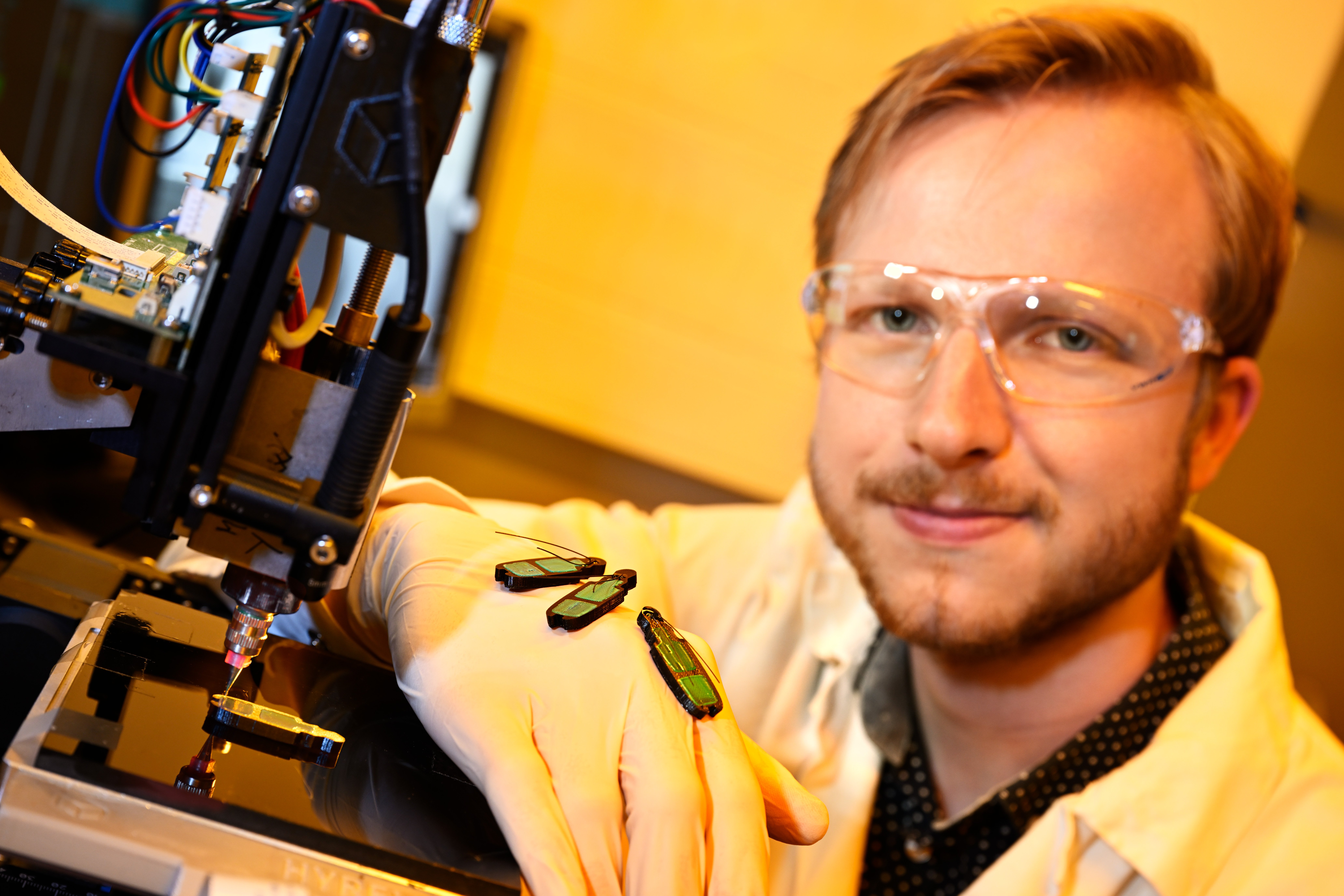
3D printing has become mainstream. For a few hundred euros you can buy a 3D printer online. But what about 4D printing? How do you print an object that can change over time, for example by reacting to touch, light or moisture? It turns out that this is not as easy as you might think. PhD student Jeroen Sol took up the challenge. He found inspiration in the world of the longhorn beetle and other animals that use iridescence and other forms of color change, writes the Eindhoven University of Technology in a press release.
Sol’s research group, led by professor Albert Schenning, has extensive experience with smart materials that respond to external stimuli, such as light, temperature or humidity. The materials use liquid crystal technology, similar to the techniques used in LCD screens, but applied in plastics. These crystals acquire different properties depending on the direction in which they are aligned (they become anisotropic). This can be either mechanical, in which case they become stronger in one direction than in the other, or optical, in which case they have a different color depending on the angle of incidence of the light.

An iridescent beetle
The latter is exactly what Sol has been working on for the past four years. Is it possible to print an object that changes color under the influence of humidity? “I found the inspiration for this in nature, and in particular in the Tmesisternus isabellae, a species of longhorn beetle whose elytra changes color in response to humidity.”
That Sol chose moisture as a stimulus, rather than light (as PhD student Marina Pilz da Cunha from the same research group did earlier for her walking mini-robot), is not an accident. “Humans are largely composed of water, and a sensor that can easily and cheaply be printed using a 3D printer, and that responds to moisture, could have all kinds of applications in healthcare. Think of a ring that measures perspiration, or in the future maybe your blood sugar.”
But Sol went a step further. He actually printed a beetle. “In the world of materials science it is very important that you make a demonstrator that proves that your invention actually works. And the choice of an animal is obvious, because there are numerous animals that make use of iridescence and other forms of color change, for example for camouflage.”

A bath of acid
But how does this beetle work? Sol explains. “First I printed a beetle from hard plastic, and applied elytra to it with photonic ink. This was also done with a printer. I then treated this layer with an acid. This causes the crystals in the ink to react to moisture. With more moisture, the material swells, so to speak, stretching the spiral structure of the crystals.
The beauty is that you can manipulate sensitivity to moisture, by making the molecules less or more charged. “That opens up all kinds of possibilities for future applications.”
Next, the researcher placed the beetle in an enclosed space where he could control the humidity. With more moisture, the green beetle slowly became redder and redder. If he brought the moisture level back down, the beetle turned green again.
“The latter is crucial,” says Sol. “That means the effect is reversible. Without the user having to reset it, it can be used again as a sensor or actuator.”
Selected for you!
Innovation Origins is the European platform for innovation news. In addition to the many reports from our own editors in 15 European countries, we select the most important press releases from reliable sources. This way you can stay up to date on what is happening in the world of innovation. Are you or do you know an organization that should not be missing from our list of selected sources? Then report to our editorial team.







